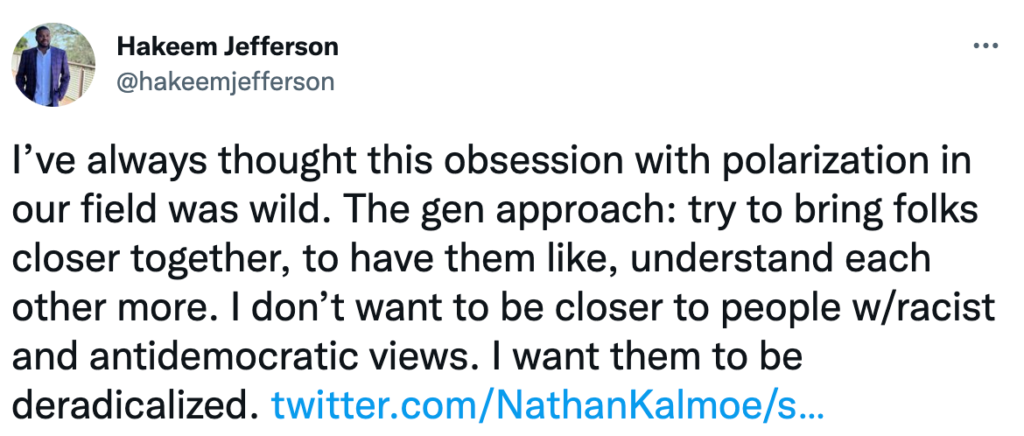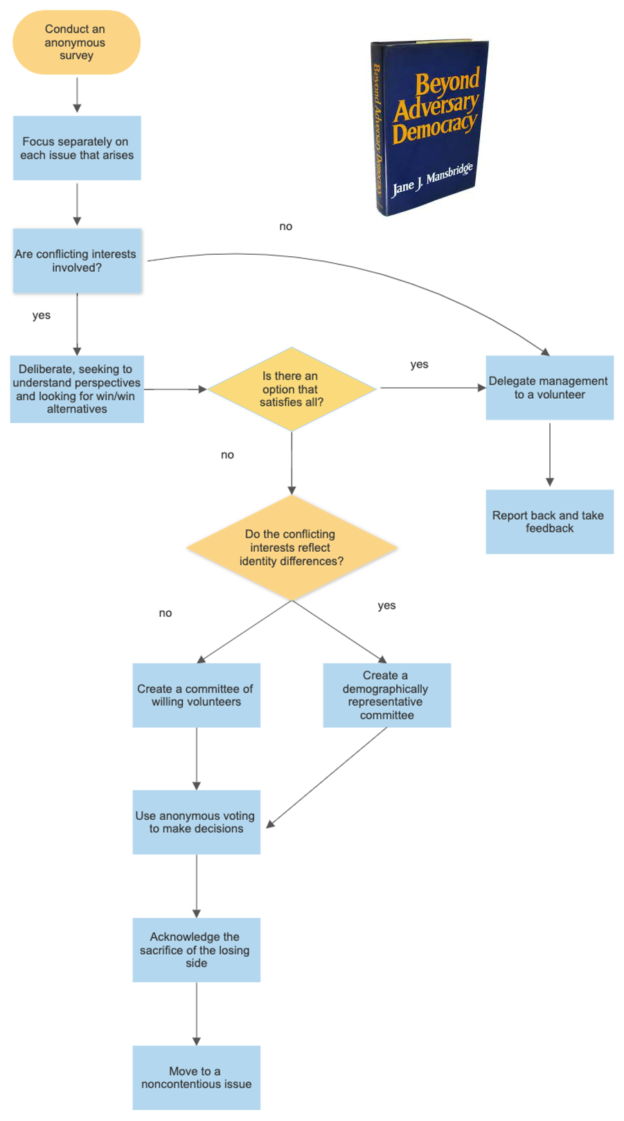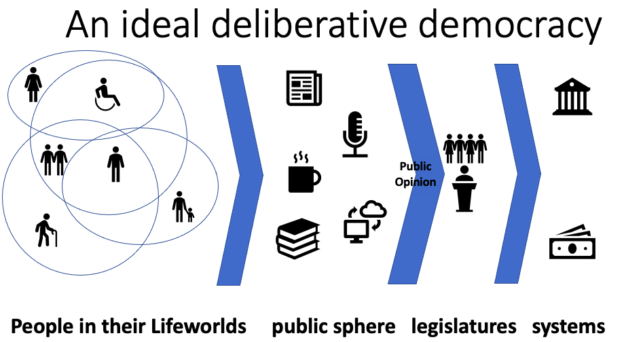In The American Political Science Review, Henry Farrell, Hugo Mercier, and Melissa Schwartzberg (2022) challenge two influential views.
One view paints a “despairing picture” of democratic reasoning. It assembles evidence that individuals demonstrate “ignorance and incompetence” about political matters, while groups “invariably” suffer from “conformity,” “affective polarization,” “the rejection of countervailing arguments from nongroup members, and backfire effects.”
The other view holds that deliberating groups are wiser than individuals because they can pool intelligence and combine perspectives.
Farrell, Mercier & Schwartzberg argue that both theories generalize too much. Some democratic processes work out well; some do not. They cite recent “interactionist” research in psychology. “Instead of looking to the (supposedly invariant) cognitive limitations of ordinary citizens as skeptics do, an interactionist approach suggests that we should investigate the social context of decisions—how groups are structured—to understand when group identity and social pressure can distort or swamp problem solving [or not].”
Farrell and his colleagues use Elinor Ostrom as a model or inspiration for this agenda. Ostrom did not emphasize the main question of deliberative democratic theory, which is something like this: How should we debate and reach conclusions about contested matters, such as public policies? Instead, she asked how people should coordinate their individual behavior to achieve outcomes that they all endorse. Whereas democratic processes involve reasoning and discussion, many of the examples that interested Ostrom were about quiet work, e.g., digging irrigation canals or editing Wikipedia articles. Still, she confronted a similar situation to the one that Farrell et al. describe in democratic theory today.
When Ostrom got started, a dominant view held that individuals cannot coordinate effectively without external compulsion: the “tragedy of the commons” problem, articulated most famously by Garrett Hardin. Mancur Olson (1971) argued that sometimes voluntary coordination succeeds, and the key variable is the size of the group. Small voluntary groups can function; large ones cannot. Ostrom absorbed that claim as part of a much more ambitious research agenda. She strove to identify aspects of groups that vary and then explored which variables affect the quality of outcomes. The size of groups turned out to be relatively insignificant, not even appearing on her list of “design principles.”
If I may say so, I adopt a very similar position to Farrell and colleagues in my new book, What Should We Do? A Theory of Civic Life (2022). I summarize Ostrom’s agenda in chapter 3 and then turn to deliberative processes. Like Farrell and colleagues, I argue that we should approach deliberative democracy much as Ostrom addressed coordination. We should experiment and test which specific conditions make discussions go well. I argue that Ostrom’s school of political economy should pay more attention to deliberation about values, because that is a necessary activity of groups. (In many of Ostrom’s cases, there is no dispute about values.) I also discuss nonviolent social movements, but that is a different topic.
When the argument is stated as in Farrell, Mercier & Schwartzberg, I anticipate two difficult but fruitful questions.
First, how should we identify successes and failures so that we can decide which democratic processes work? After all, people often disagree about what constitutes a success. One option is to use obvious cases of failure, when everyone would regard the outcome as suboptimal. We can ask why that happened. But this approach shifts the research away from debates about principles and goals toward purely instrumental problems, like how to preserve common resources, which Ostrom and her many colleagues already studied. The more controversial the topic becomes, the less we already know about how to structure conversations about it–although I would cite literature that Farrell et al. don’t mention, such as work by John Gastil, Archon Fung, Tina Nabatchi and Matt Leighninger, Celina Su, and others. These authors have identified variables that affect conversational quality, such as the method of recruiting or admitting participants, the nature of the facilitation, and the stakes of the discussion. Still, the problem of identifying success remains. (They do mention essential work by Michael Neblo et al.)
Second, what should be done with the findings? This research has implications for the design of governments and other big institutions. The US Constitution already requires jury trials; the Constitution of India requires every village to have an empowered annual meeting. Knowing more about the conditions that make discussions go well can help us to understand whether such provisions are optimal and what other rights and institutions we should add.
But I think the main audience will be civil society. Voluntary groups–including those that seek to influence governments–are best positioned to experiment with formats for discussion. They have more flexibility than governments, they can change more easily, and their sheer number and variety creates more opportunities.
Sources: Farrell, H., Mercier, H., & Schwartzberg, M. (2022). Analytical Democratic Theory: A Microfoundational Approach. American Political Science Review, 1-6; Ostrom, Elinor (1990). Governing the commons: The evolution of institutions for collective action. Cambridge University Press, Olson, Mancur (1991), The Logic of Collective Action, Harvard University Press. See also: don’t let the behavioral revolution make you fatalistic; how political talk relates to its context; this is what deliberative democracy looks like; why study real-life deliberation?; the legacy of Elinor Ostrom and the Bloomington School; etc.


